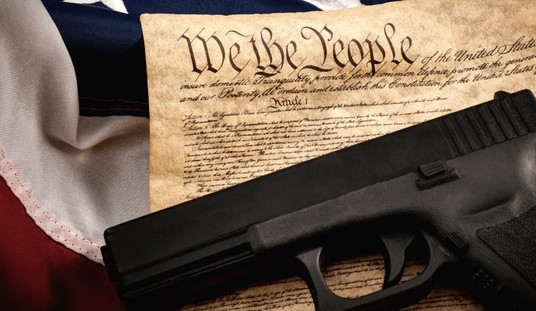Earlier this week, the American Public Health Association published a bogus new study on how gun legislation impacts officer-involved shootings. The APHA looked at fatal police shootings been January 1, 2015, through October 31, 2016. Altogether, 1,835 cases were evaluated.
Their conclusion: “Legislative restrictions on firearms are associated with reductions in fatal police shootings.”
“We suspect that because these states have more robust gun laws, they’re better able to keep guns out of the hands of the wrong people,” the study’s lead author, University of Indianapolis psychology professor Aaron Kivisto, told The Los Angeles Times. Officers in gun control-favoring states “are just less likely to encounter people in circumstances where they shouldn’t have a gun.”
Of course, the study has the same talking points as gun control advocates. They claim states like New Mexico, Arizona, Wyoming, and Oklahoma lead the country in the number of fatal police shootings…and the states have the most “relaxed” gun laws.
Rhode Island, New York, Connecticut, Massachusetts and Illinois were among the states with the lowest rates of officer-involved fatal shootings. All had gun laws that placed them among the nation’s most restrictive states.
But not all states fit the pattern. California was especially unusual, Kivisto said: Though the state claimed the No. 1 position for stringency of gun laws, its rate of fatal police shootings during the study period was much higher than the national average. In fact, the rate of officer-involved gun deaths in California fell between those of South Dakota and Alabama, two states with some of the scantest restrictions on the sale, ownership and use of guns.
And guess what? The study claims states with tight gun control laws, like California, have a high number of police shootings because of gun trafficking from pesky states like Arizona and New Mexico that have “relaxed” gun laws.
Um…maybe, just maybe, their statistics have nothing to do with other states. It probably has something to do with them disarming law-abiding gun owners. But then again, maybe that’s just a hunch.
“A state can have the strongest gun laws possible, but it can’t stop gun(s) from flowing across state boundaries,” Kivisto told LAT. ”One of strongest arguments for federal gun laws would be that some uniformity may be needed to stop guns flowing in from other states.”
Even more interesting? The study didn’t rely on stats from the DoJ. Instead, they relied on stats from The Guardian, since it’s considered “comprehensive” – whatever the heck that means.
In addition to verifying and chronicling the time, location and circumstances of the shootings, The Guardian’s database, called “The Counted,” also documents the victim’s gender, race or ethnicity, whether he (96% of all victims during the study period were male) was armed, and by what mechanism the victim was killed (for instance, by taser, by firearm or struck by a car).
Once again, gun control advocates pick and choose what data they use. Why would they rely on information from a British newspaper instead of statistics from the DoJ? Because the stats don’t fit their agenda. And Britain has major gun control.








Join the conversation as a VIP Member